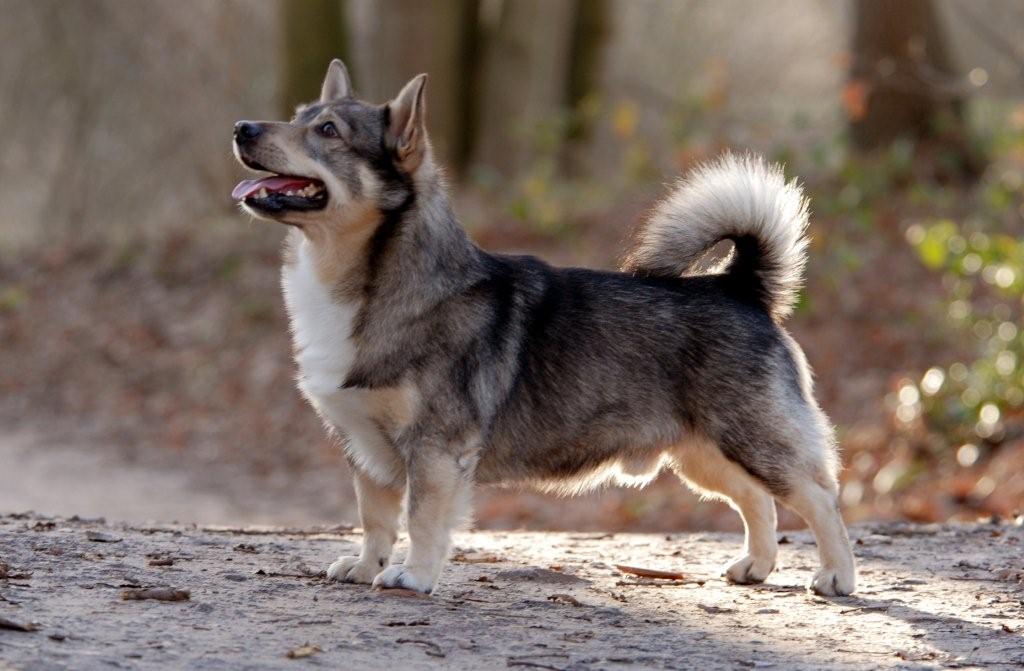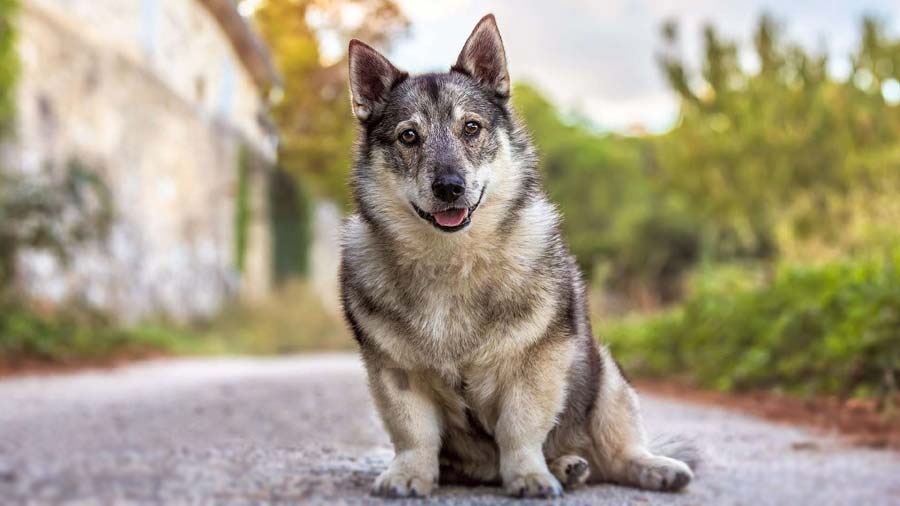The Swedish Vallhund, often referred to as the "Viking Dog," is a captivating breed that embodies the spirit of the Scandinavian countryside. With a history deeply intertwined with Swedish culture and heritage, this versatile herding dog has captured the hearts of many dog enthusiasts. In this article, we'll take a closer look at the fascinating world of the Swedish Vallhund, uncovering its origins, characteristics, care needs, and the unique role it plays as a beloved companion.

Origins and Historical Significance
The Swedish Vallhund boasts a rich history rooted in its role as a farmstead companion and worker.
Farmstead Companion and Worker
Originally bred to assist Swedish farmers in herding cattle and controlling vermin, the Swedish Vallhund is a multitasking marvel. Their compact size allowed them to efficiently move among livestock while their innate herding instinct ensured the smooth management of the farmstead. Their versatility and hardworking nature made them an indispensable part of rural Swedish life.
Ancestral Links to Viking Times
The Swedish Vallhund's connection to Viking times adds an air of mystery and historical intrigue. Believed to have been brought to Sweden by the Vikings, these dogs contributed to the livelihood of their Viking companions. Their name, "Vallhund," translates to "herding dog," signifying their integral role in Viking society as skilled herders and trusted companions.

Distinctive Physical Traits
The Swedish Vallhund's physical characteristics reflect its functionality as a herding dog.
Compact Stature and Vigorous Build
With a compact and sturdy build, the Swedish Vallhund possesses the agility and strength required for herding tasks. Their low-to-the-ground stature allowed them to nimbly navigate the terrain while maintaining control over cattle. This unique physique is a testament to their adaptability and efficiency in their working roles.
Unique Coat Colors and Patterns
The Swedish Vallhund's coat is characterized by striking dog coat colors and patterns, including gray, red, and sable shades with distinct markings. This captivating coat, combined with their expressive eyes and perky ears, adds to their charm and individuality.
Weight and Height
The breed's weight and height can vary based on factors such as gender, genetics, and individual characteristics. Here's a general overview of the typical weight and height range for Swedish Vallhunds:
Weight:
- Adult Male: 20 to 35 pounds (9 to 16 kg)
- Adult Female: 20 to 30 pounds (9 to 14 kg)
Height:
- Adult Male: 12.5 to 13.5 inches (32 to 34 cm) at the shoulder
- Adult Female: 11.5 to 12.5 inches (29 to 32 cm) at the shoulder
It's important to note that these ranges are approximate and can vary within the breed.
Temperament and Behavior
The Swedish Vallhund's temperament and behavior make them a delightful addition to any household.
Energetic and Intelligent
Energetic and intelligent, the Swedish Vallhund thrives on mental and physical stimulation. Their keen minds are constantly seeking challenges, making them excellent sports dog candidates for various canine games and activities. Engaging their intellect helps prevent boredom and promotes a well-rounded, happy companion.
Strong Bond with Family
Known for their loyalty and affection, Swedish Vallhunds form strong bonds with their families. They enjoy being involved in family activities and are especially fond of spending quality time with their human companions. This strong bond fosters a deep connection that brings joy and companionship to both the dog and the owner.
Caring for Your Swedish Vallhund
Caring for a Swedish Vallhund involves meeting their unique needs for physical and mental well-being.
Exercise and Mental Stimulation
Regular exercise is essential to keep the Swedish Vallhund's energy levels in check. Engaging in activities such as brisk walks, play sessions, and interactive games satisfies their physical and mental requirements. Providing puzzle toys and tasks that challenge their problem-solving skills enhances their cognitive development.
Grooming Requirements
The Swedish Vallhund's short double coat requires minimal grooming. Regular brushing helps keep shedding under control and maintains their coat's health and shine. Occasional baths, nail trims, and dental health care contribute to their overall well-being.
Training and Enrichment
Training a Swedish Vallhund is a rewarding experience that showcases their intelligence and versatility.
Quick Learners and Problem Solvers
Swedish Vallhunds possess a keen ability to learn quickly and solve problems. They excel in obedience training and often participate in dog sports such as agility, obedience trials, and herding competitions. Their sharp minds and eagerness to please make training sessions enjoyable and fruitful.
Engaging Training Approaches
Engaging and positive training methods work best for the Swedish Vallhund. Reward-based training using treats, praise, and interactive dog toys motivate them to learn and perform tasks effectively. Consistency and patience are key to achieving desired behaviors and fostering a strong bond between dog and owner.
Swedish Vallhund in Modern Society
The Swedish Vallhund's adaptability allows them to excel in various roles in modern society.
Versatile Roles and Adaptability
While their herding skills remain a core trait, Swedish Vallhunds have adapted to new roles, including therapy work, dog sports, and loyal family companionship. Their versatility and willingness to embrace new challenges make them an ideal choice for active households seeking a dynamic and engaging canine partner.
Cherished Family Companion
As cherished family companions, Swedish Vallhunds bring joy, love, and a touch of history to their homes. Their unwavering loyalty, gentle disposition, and enthusiasm for life make them treasured members of families of all sizes.
Health and Longevity
Swedish Vallhunds are a robust and versatile breed known for their energy and agility. Like all dogs, they require proper care to ensure a healthy and fulfilling life. Let's delve into the key aspects of their health and longevity.
Health Considerations
Swedish Vallhunds are generally healthy dogs, but like any breed, they can be prone to certain health issues. Potential owners need to be aware of these potential concerns and take preventive measures. Some common health considerations for Swedish Vallhunds include:
- Hip Dysplasia: A genetic condition that affects the hip joint, hip dysplasia can lead to pain and mobility issues. Responsible breeding practices and regular exercise can help reduce the risk.
- Eye Conditions: Some Swedish Vallhunds may be prone to eye issues such as progressive retinal atrophy (PRA) and cataracts. Regular veterinary check-ups can help monitor and manage these conditions.
- Thyroid Disorders: Hypothyroidism can occur in Swedish Vallhunds, leading to symptoms like weight gain, lethargy, and skin problems. Regular blood tests and proper medical care can help manage thyroid health.
- Intervertebral Disc Disease (IVDD): This spinal condition can affect dogs with long backs, like Swedish Vallhunds. Maintaining a healthy weight and avoiding activities that strain the back can help prevent IVDD.

Longevity and Care
Swedish Vallhunds have a relatively long lifespan compared to some other breeds. With proper care, attention to their health, and a loving environment, they can live a fulfilling life for up to 12 to 15 years or more. To ensure their well-being and longevity:
- Nutrition: Provide a balanced and age-appropriate diet to meet their nutritional needs. Consult with your veterinarian to determine the best feeding plan for your Swedish Vallhund.
- Exercise: Regular exercise is essential to keep them physically and mentally stimulated. Engage in activities such as daily walks, playtime, and even agility training to maintain their energy levels.
- Regular Check-ups: Schedule regular veterinary check-ups to monitor their health, address any concerns promptly, and ensure they receive vaccinations and preventive treatments.
- Dental Care: Dental hygiene is important to prevent dental issues. Regular brushing and providing appropriate dental chews can help maintain their oral health.
- Grooming: While Swedish Vallhunds have a relatively low-maintenance coat, regular brushing, and occasional baths will keep their skin and coat in good condition.

Myths and Realities
Swedish Vallhunds are a captivating breed with a rich history and distinct characteristics. However, like many popular breeds, there are several myths and misconceptions surrounding them. Let's separate fact from fiction and explore the truths about these wonderful dogs.
Myth 1: Swedish Vallhunds are Miniature Corgis
Reality: While Swedish Vallhunds and Corgis share some physical similarities, they are distinct breeds with unique origins and characteristics. Swedish Vallhunds have their heritage as herding dogs in Sweden and exhibit traits that set them apart from Corgis.
Myth 2: Swedish Vallhunds are Aggressive Due to Their Herding Background
Reality: Swedish Vallhunds were indeed bred for herding, but their herding instincts do not necessarily translate to aggression. Proper socialization, training, and responsible ownership play a more significant role in shaping their temperament. With the right guidance, they can be friendly and well-mannered companions.
Myth 3: Swedish Vallhunds Require Extensive Grooming
Reality: Swedish Vallhunds have a short, dense double coat that is relatively low-maintenance. Regular brushing to manage shedding and occasional baths are usually sufficient to keep their coat in good condition. Their grooming needs are moderate compared to some other breeds.
Myth 4: Swedish Vallhunds are Prone to Health Issues
Reality: While no breed is entirely immune to health concerns, Swedish Vallhunds are generally considered a healthy breed. Responsible breeding practices, regular veterinary care, and a healthy lifestyle can contribute to their overall well-being. As with any breed, prospective owners should be aware of potential genetic issues and work with reputable breeders.
Myth 5: Swedish Vallhunds are Not Suitable for Families with Children
Reality: Swedish Vallhunds can make wonderful family companions when properly trained and socialized. They are known for their friendly and affectionate nature. However, like any dog, supervision and teaching children how to interact respectfully with dogs are essential for a harmonious relationship.
Myth 6: Swedish Vallhunds Need Extensive Exercise
Reality: While Swedish Vallhunds are an active breed, their exercise needs can be managed with regular walks, playtime, and mental stimulation. They do enjoy physical activities, but they are adaptable to various lifestyles and are not excessively demanding in terms of exercise.
Swedish Vallhund Community
Joining the Swedish Vallhund community enhances the experience of being a dog owner.
Clubs and Enthusiast Groups
Numerous clubs and enthusiast groups are dedicated to the Swedish Vallhund breed. These communities provide a platform for sharing knowledge, experiences, and advice. Connecting with fellow owners allows you to learn from their insights and build connections with those who share your passion.
Sharing Experiences
Sharing your journey with a Swedish Vallhund creates a sense of camaraderie among fellow enthusiasts. Your experiences, triumphs, and challenges can inspire others and contribute to the collective knowledge of the breed.
Adopting a Swedish Vallhund
Adopting a Swedish Vallhund requires careful consideration and preparation.

Research and Education
Before adopting, research the breed thoroughly to understand their needs and characteristics. Educate yourself about responsible ownership and the commitment required to provide a loving and fulfilling life for your new companion.
Finding a Reputable Source
Whether adopting from a breeder or rescue organization, choosing a reputable source is crucial. Reputable breeders prioritize the health and well-being of their dogs, and rescue organizations ensure that dogs are placed in suitable homes.
Average Pricing
The average price of a Swedish Vallhund can vary depending on factors such as the dog's pedigree, lineage, location, and breeder reputation. On average, you can expect to pay between $1,000 and $2,500 for a Swedish Vallhund puppy from a reputable breeder. It's important to note that prices can fluctuate based on demand, availability, and other market factors.
When considering purchasing a Swedish Vallhund, it's recommended to do thorough research, contact multiple breeders, and ensure that the breeder follows responsible breeding practices. Additionally, adopting a Swedish Vallhund from a rescue organization or shelter can be a more cost-effective option and provides a loving home to a dog in need. Adoption fees for rescue dogs are typically lower than purchasing from a breeder and often include essential medical procedures.
Conclusion
The Swedish Vallhund, with its rich history, versatile nature, and deep bonds, is an exceptional companion that offers a glimpse into the past while embracing the present. By understanding their heritage, meeting their needs, and connecting with fellow enthusiasts, you embark on a journey of companionship that is as rewarding as it is enriching.
FAQs
1. Are Swedish Vallhunds good for families with children?
Yes, Swedish Vallhunds can be excellent family dogs, especially when raised with children and properly socialized.
2. Do Swedish Vallhunds get along with other pets?
With proper socialization, Swedish Vallhunds can coexist with other pets, although their herding instincts may manifest.
3. How much exercise do Swedish Vallhunds need?
Swedish Vallhunds require moderate to high levels of exercise. Daily walks, playtime, and mental stimulation are essential for their well-being.
4. Can Swedish Vallhunds adapt to apartment living?
Yes, Swedish Vallhunds can adapt to apartment living if their exercise and mental stimulation needs are met.
5. Are Swedish Vallhunds prone to separation anxiety?
With proper training and gradual adjustments, Swedish Vallhunds can learn to cope with being alone for reasonable periods.




